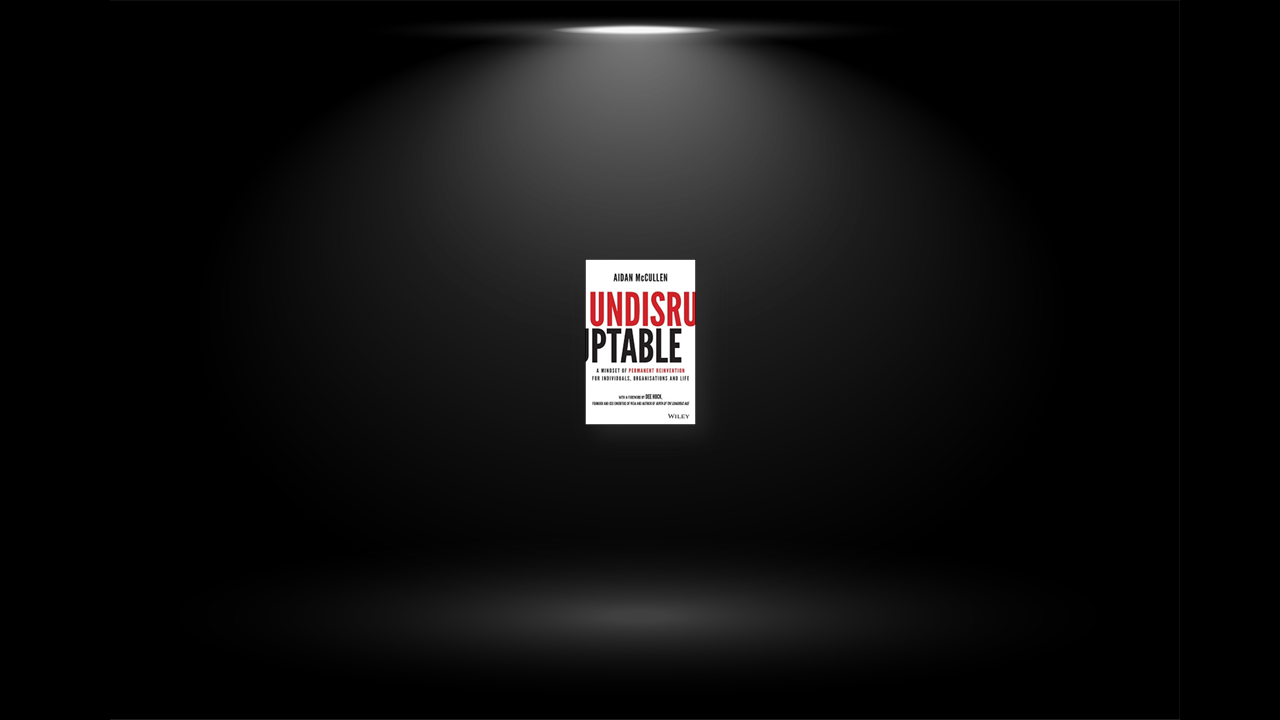Resistance to Reinvention
Resisting change is natural. The status quo will always resist; that is its nature. Changemakers must recognise the signs of resistance as milestones of change; this resistance is a rite of passage. Incremental change means small improvements or minor changes. Transformational change can be extremely difficult and even painful. Transformational change involves psychological warfare for the individual.
Even when faced with debilitating disease, many people still resist change. Even when faced with organisational disruption, many leaders resist reinvention. Transformational change involves territorial warfare for the organisation. Transformational change is a slow process that cannot be rushed. Becoming something new means letting go of something old.
To create a new reality, we must introduce new thoughts and new practices to reinforce those new thoughts. This is the beginning of new mental models changing new business models; it is a circular process. The old self is fuel for the new like the caterpillar feeds on its shell and just like the butterfly feeds on its former self when it liquifies the caterpillar.
Kintsugi Thinking
Kintsugi thinking means reframing mistakes as learning opportunities. istakes are only failures when we don’t learn from them. By reframing our approach to mistakes, we can fail our way to success. The more we expose ourselves to making mistakes in the pursuit of progress, the more opportunity we give ourselves to learn.
How we react to failure has an immense impact on others, from a parent’s reaction to a child’s mistake to the leader of one of the most successful organisations of all time. Jeff Bezos’ reaction to the Fire failure spoke volumes about the organisational mindset and encouraged further experimentation. When we embrace mistakes as learning outcomes, we can uncover new capabilities, new innovations and new opportunities. It is key to remember there are always assets in the ashes.
S Curves: A Framework for Permanent Reinvention
The S curve is a mental model or heuristic to plot a large variety of phenomena: technology, business models and careers for example. The S curve is a fundamental model for a permanent reinvention mindset; think of it as the optometrist’s contraption on which we can place the lenses you pick up in this book and beyond.
S curve growth exhibits a progression from small beginnings that accelerate, approach a climax and eventually decline. The key phase comes in jumping to a new S curve. Jumping to a new S curve presents a plethora of challenges, the emergent idea often looks far different than the final product. Crucially, we must jump to a new S curve before it becomes necessary. When you jump to a new curve in desperation, your decision-making is flawed and you make poor choices.
The key is to develop capabilities before you need them; this counts for individuals as well as organisations. Sometimes when you jump to a new curve, the results are not financial, they are what I call return on capability or RoC. RoC includes skills learned in the endeavour, mindsets established from the experiment and technology built from your efforts.
The Ouroboros: Infinity Curve
The ouroboros is an ancient symbol for eternal, cyclical renewal or a cycle of life, death and rebirth. he ouroboros provides a perfect analogy for the reinvention of the S curve model. S curves are not isolated moments in time, but part of a perpetual process. When the S doubles back upon itself, it mirrors the ouroboros and reflects the concept of the caterpillar eating its own egg to fuel its future.
Organisations can learn from this principle and see how the legacy organisation can fuel the emergent one. Individuals can use this as a mental model to reframe personal development as a perpetual odyssey. Unlike a journey, an odyssey has no fixed destination: permanent reinvention is an odyssey with no destination.
Recalibrating Time
We have been conditioned to think of time as linear. Ancient cultures perceived time as cyclical. Cyclical time works perfectly for the concept of the infinity curve; cycles suggest there is no end, just the beginning of the next cycle. Cycles are a great way to reframe every aspect of your life, from your career to your relationship, each interacting with the other and each at a different stage of its own life cycle.
Personal Vision
Vision is the magnetic force that compels us towards a new becoming. Even if our vision is blurry, it acts as a North Star to guide us. Without vision, we may think we are busy but might be wandering aimlessly without (sans) purpose. Studies show that many people rapidly decline after retirement, particularly if they have overidentified with their careers.
This provides a warning shot for all of us to cultivate vision across all areas of our lives. Once you set a vision, you activate your RAS, the reticular activating system, a part of your brain that filters information that you deem important. The RAS is why many of us experience life so differently. When you have a vision, you become aware of all kinds of opportunities and serendipities that you may otherwise have overlooked. Studies show that, when we visualise, in addition to doing the required work we are far more likely to achieve success.
Organisational Vision
When light is concentrated in lockstep it is powerful, like a laser beam. It is the job of a leader to unite people and focus them on a compelling vision. The hub and spoke model was a core component of the success of the Roman Empire.
Apple’s digital hub strategy led to unprecedented success and the world’s first trillion-, and then two-trillion-dollar business. Vision can work in a similar way, with vision being the central spoke connecting your people and all their diverse activities. Without vision, your organisation may be busy, but disconnected, lots of movement but no direction, like an octopus on rollerblades. Articulating your vision publicly can also excite your future customers.
Managing Contrasts
As soon as we set a vision, we meet obstacles. The law of opposites gives us a powerful lens for the permanent reinvention mindset. When we understand there is a positive with every negative, when we inevitably encounter a negative, we know it is temporary and a positive experience is on the way.
When you initiate change often people close to you will discourage you, they may see it as a reflection of themselves and won’t want to let you go or grow. In other instances, they do not want to see you get hurt. It is difficult, but try not to hold it against them, they are playing the naysayer role that is common in any transformation process (with the caveat that if they are discouraging you on an ongoing basis, then you need to re-evaluate that relationship).
In an organisation, this is akin to the blocker, the cell of the old DNA which blocks the emergent imaginal cell, also known as the corporate antibody. All crises, wars, pandemics, economic downturns are just negatives in a dynamic process, there is a positive on the way. When we realise the negative experience is a rite of passage on our journey toward success, we see the obstacles as milestones, not millstones.
When two opposing forces collide they create energy – we can harness that energy to power a new reality. The loftier the vision, the higher the hurdles, but the greater the reward.


